The fire at Grenfell tower in Kensington has been at the centre of media coverage over the past few days. The deaths have sparked angry protests, calls for resignation, the start of a formal government inquiry, and some serious scrutiny of the politicians who could have arguably prevented this tragedy. There have been calls of mainstream media under-estimating the death toll from numerous left-wing activists/figureheads – including Lily Allen and Akala.
What has been even more striking than the outcry and protest over the fire, the refubrishment, the local council decisions, and Conservative fire service cuts is the media framing of both this horrendous disaster and it’s fallout. After talking briefly about the framing of narratives in the election a few weeks ago, we wanted to take an indepth look at the spectrum of reactions from news outlets surrounding Grenfell to help better understand how the media framing of any issue can vary so widely.
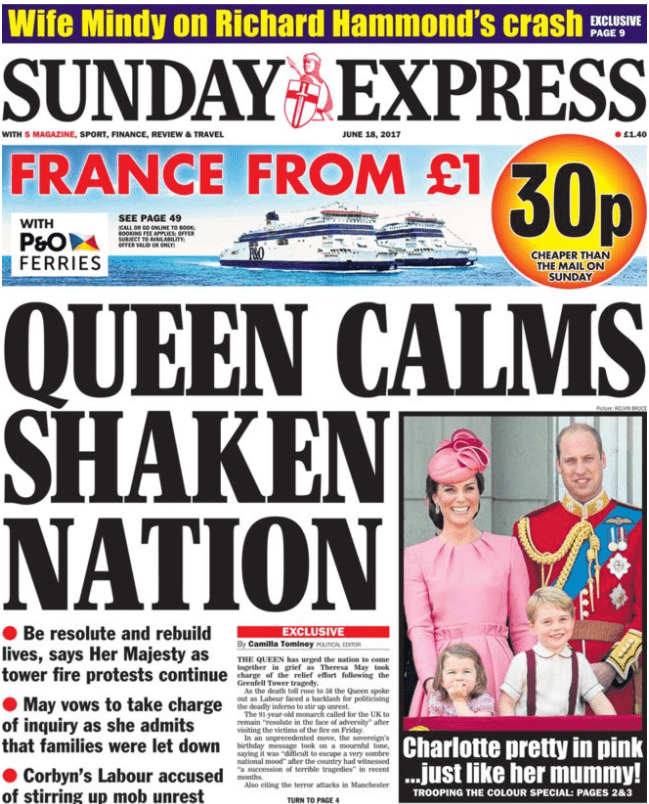
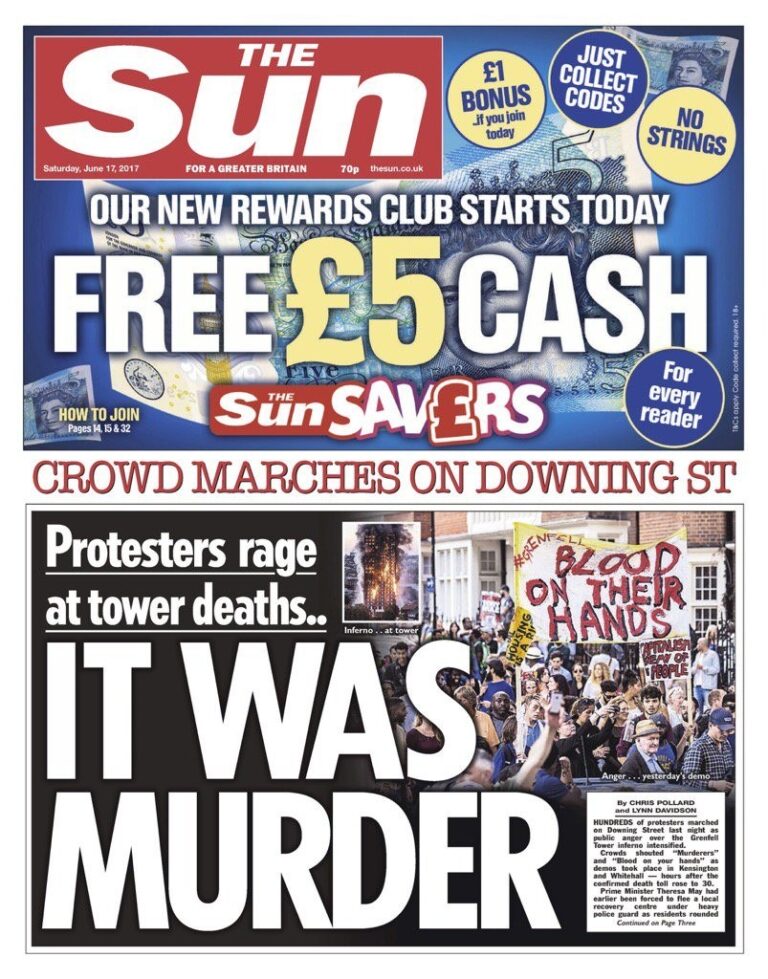
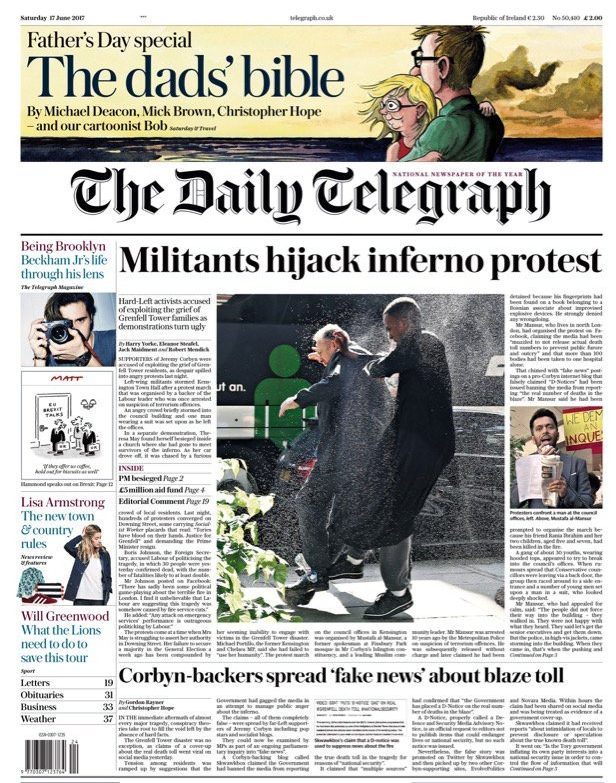
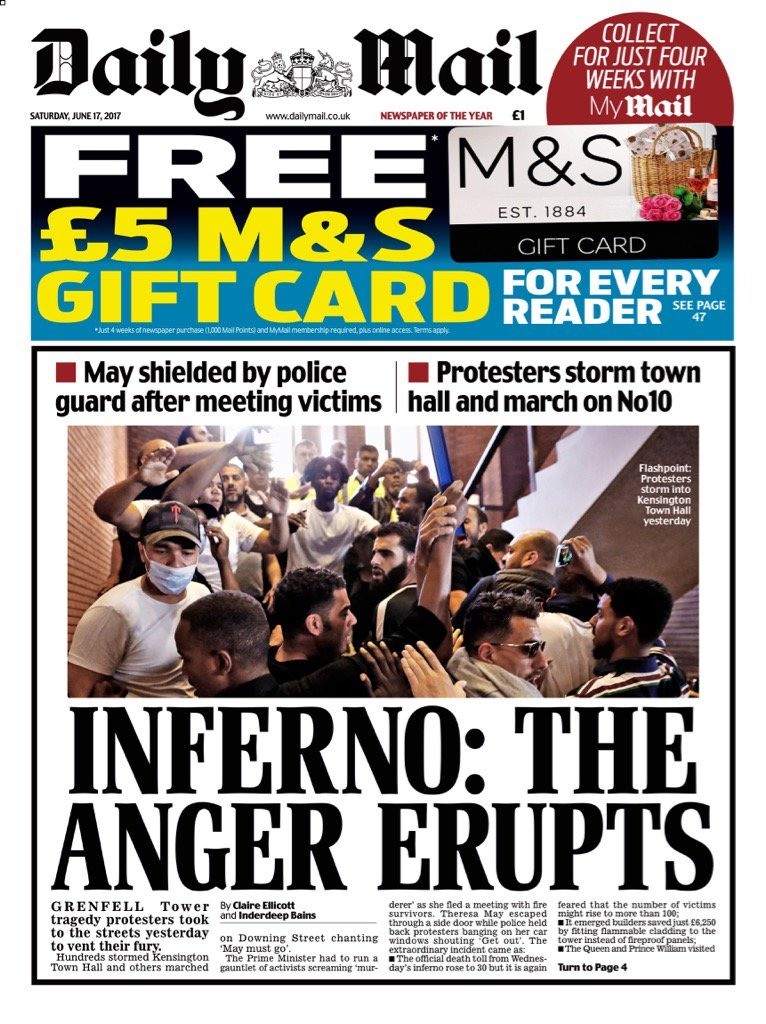
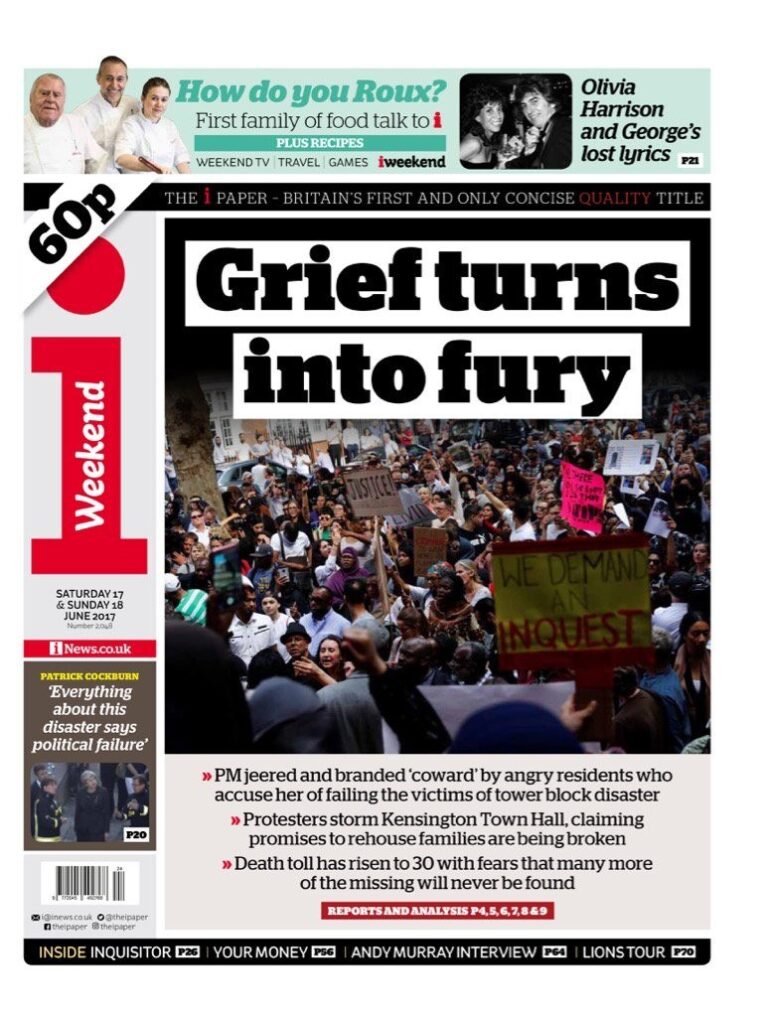
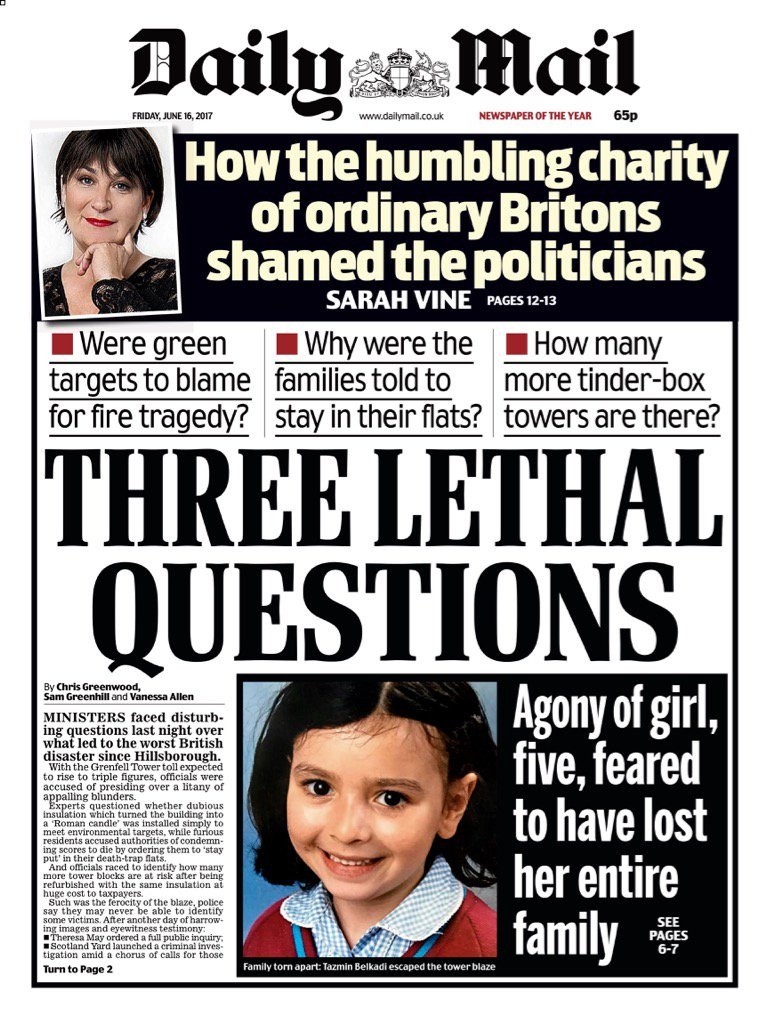
All Newspaper Sources Credit to http://suttonnick.tumblr.com/
Above you’ll see some of the headlines that frame the protesters as the key issue here, vilifying their protests rather than the cause of the fire. The Telegraph claimed that the protest that ended up inside Kensinton town hall had been hijacked by militants, The Sunday Express reported on accusations that “Corbyn’s Labour stirred up mob unrest”, whilst The Daily Mail found space to criticise green targets for the deaths. There was also talk of how the protesters “stormed” Kensington Town Hall, arguably painting the protesters as rebels, although iWeekend offered a less simplistic view than The Daily Mail, noting that the protesters had legitimate grievances here.
Comparitively, we see the reaction from more centrist or left wing outlets, such as the Guardian, Evolve Politics, or the Independent, who are framing these protesters as justice seekers, not militant hijackers. The stories here are about the victims and their fight against the establishment. The London Evening Standard takes a fairly neutral stance here, although they were reporting on a protest of some thousands over Theresa May’s leadership and the DUP Deal – a protest that failed to make the BBC News UK Front Page later that evening.
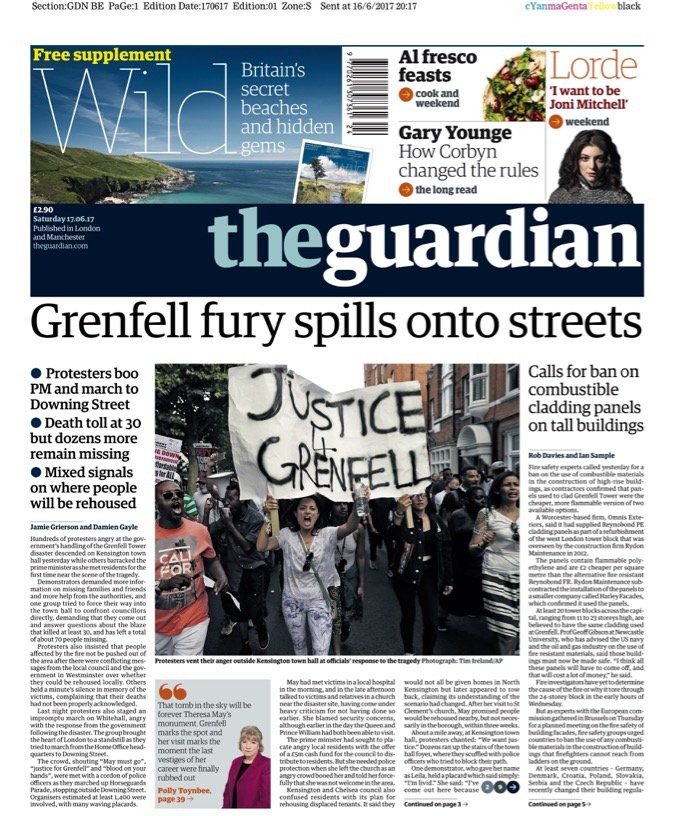
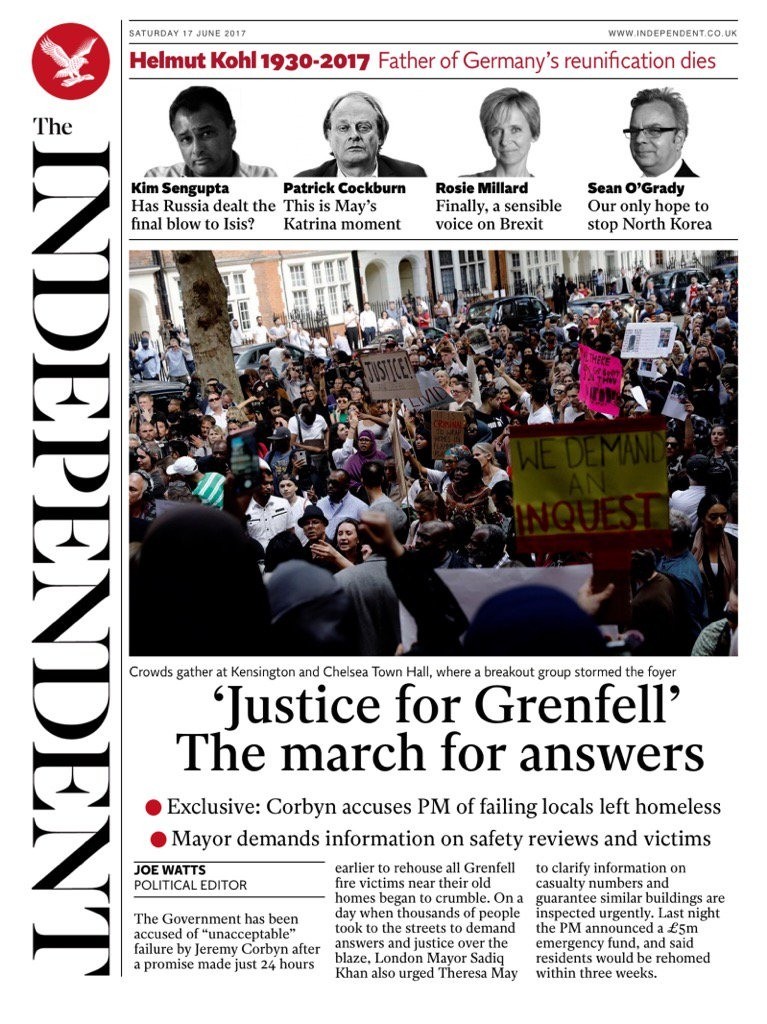
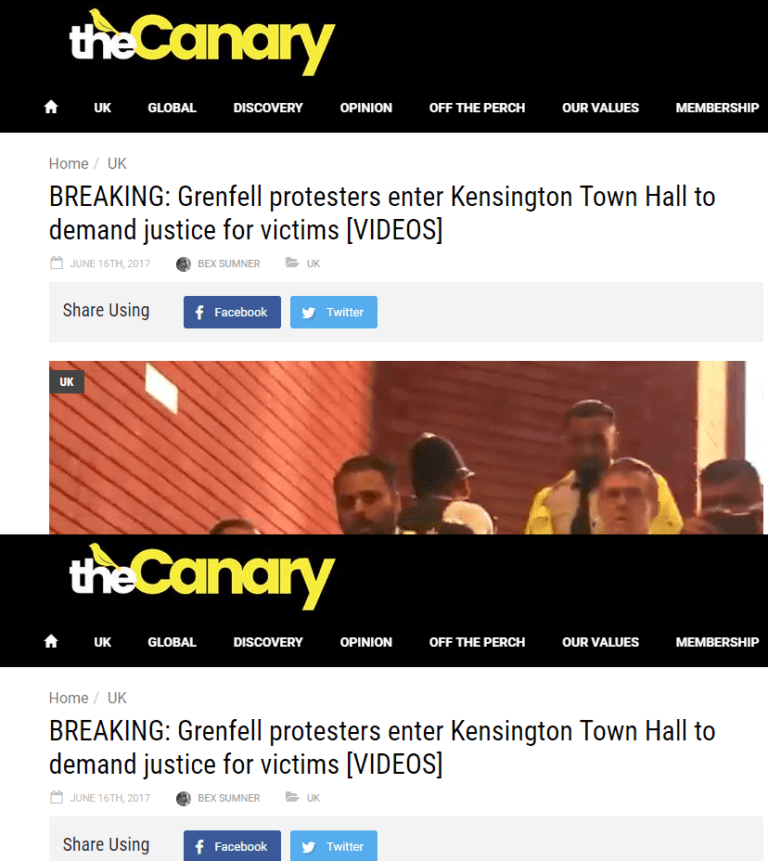

Then there was a number of papers who chose to focus on the tragedy of the fire itself, asking questions about how such a catastrophic event could have been allowed to happen. The Mirror offers a suggestion that the country has turned it’s back on social housing, whilst the i chose to mention the PM’s chief of staff, Gavin Barwell, who allegedly sat on a report surrounding fire safety in buildings like Grenwell for around four years.
There were accusations on social media, and from Lily Allen, that the death count was being suppressed by the mainstream media. Many right wing tabloids hit back at “Corbyn supporters” for spreading “fake news” about the fire and it’s victims. Buzzfeed did a great piece of reporting on this very issue, separating rumours on social media from the facts of the issue, that you can read here.
Traditional outlets from across the political spectrum (including the BBC, The Independent, and The Telegraph) are currently reporting the death toll at around 58, which has risen significantly from the estimates that appeared soon after the fire. However, with Lily Allen’s claim that around “150” spreading rapidly across digital and independent media like Evolve Politics, the mistrust of mainstream media figures become more reasonable. However, it would seem unwise to make any judgements on whether death tolls had been played down until the official search of the building has been completed.
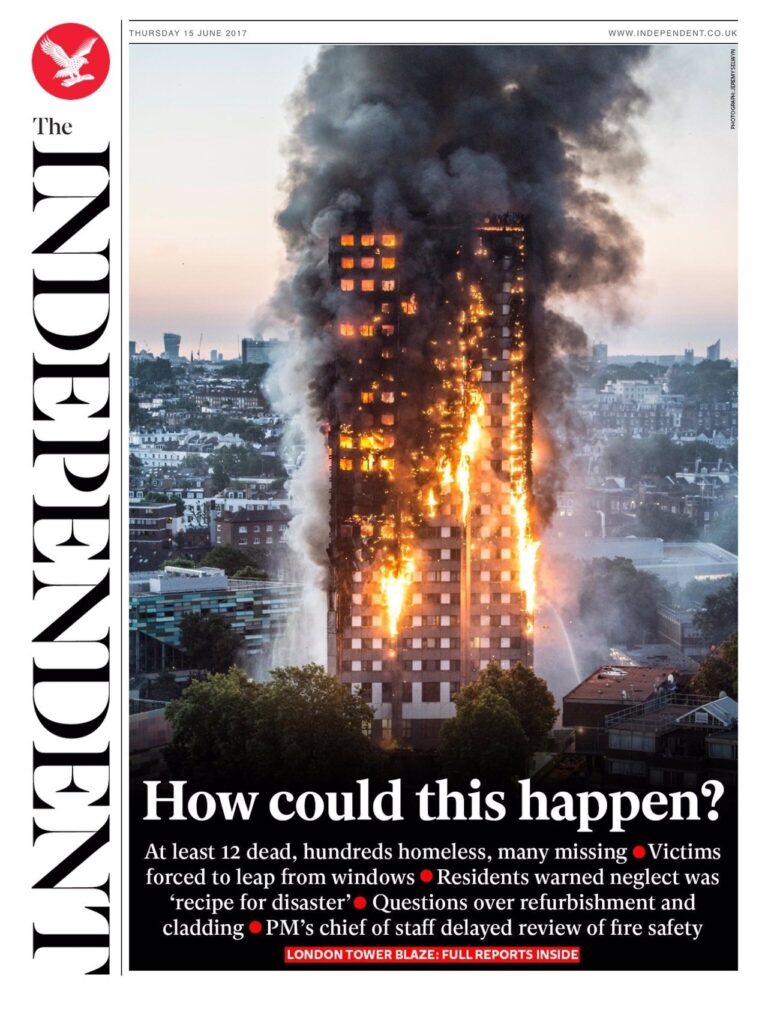
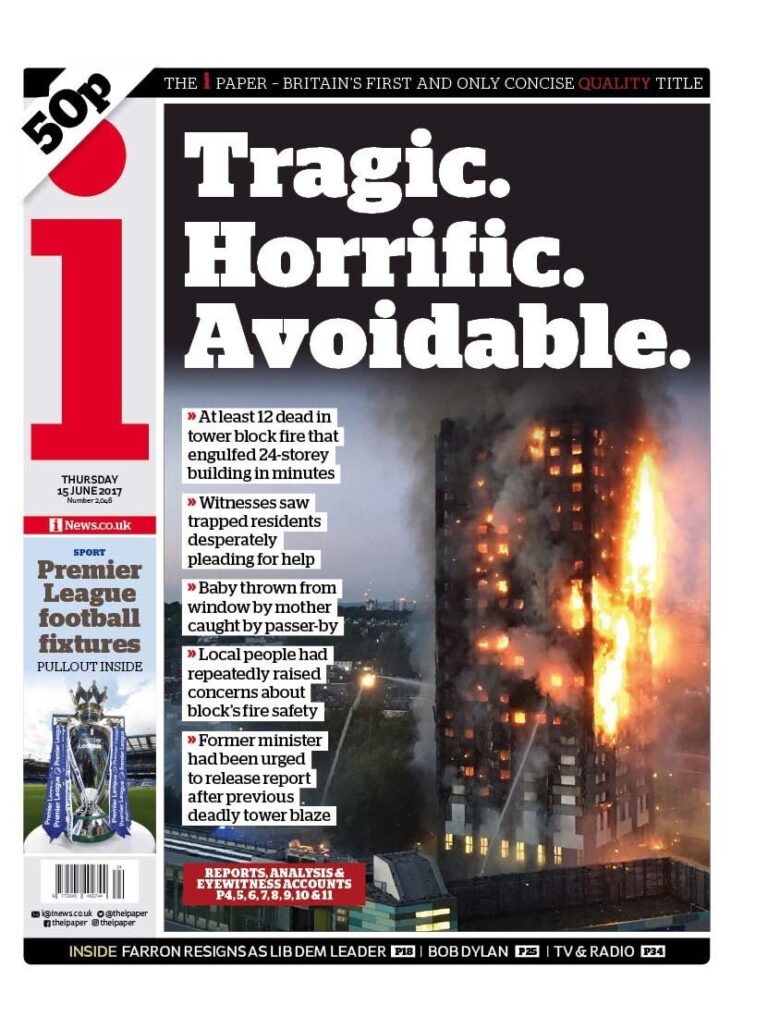
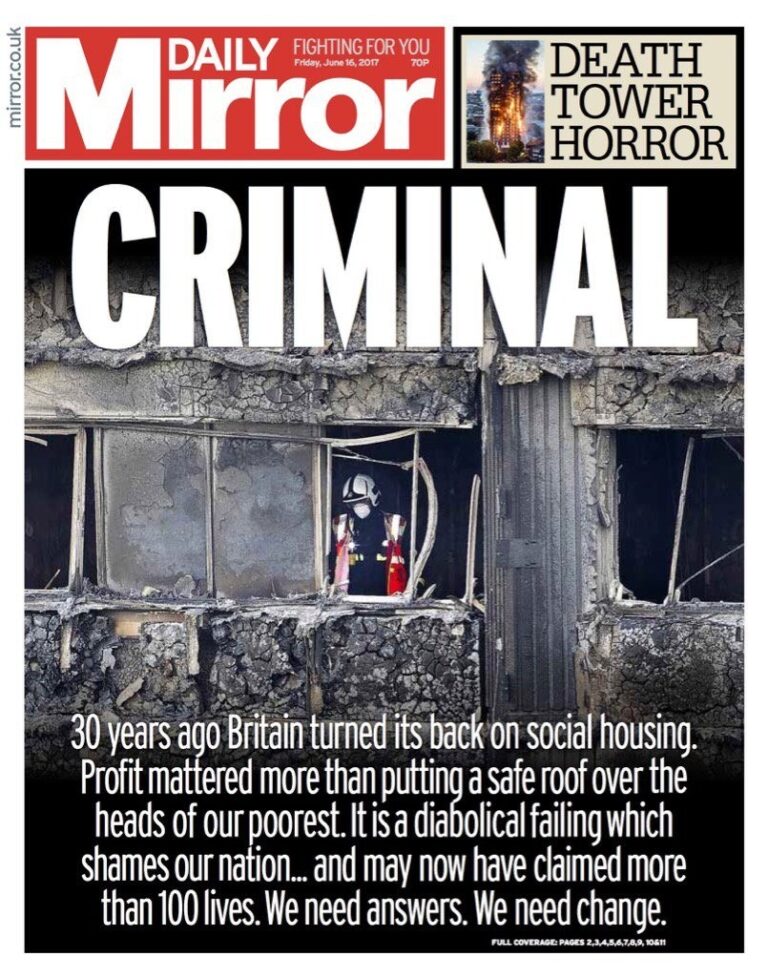
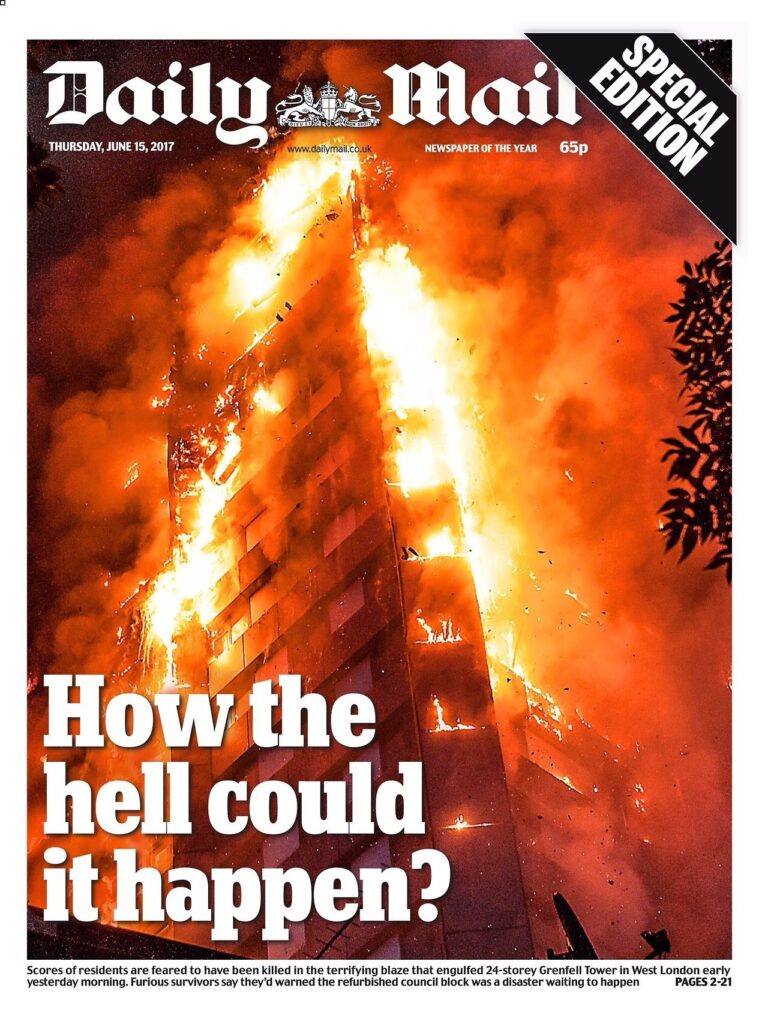
The problem with disasters like this is often the media can sensationalise and constantly estimate higher death tolls in order to seem better informed, so it is nice to have a relative level of agreement amongst mainstream outlets. However, the claim that 150 people have died has yet to be substantiated, especially since there are no concrete figures on how many people were in building that night. Estimates vary between 100 and 600 people, so the drip tap of information from the tower site is the only real way of confirmed the number of victims. That isn’t to say digital or alternative media is to be mistrusted, independent media is becoming an increasing important part of our news cycle and mainstream media mistrust has been fuelled by questions over their motives and objectivity. However, it is always important to understand the source of any story before judging it’s credibility, rather than just the name of the outlet.
This tragic event has played out as a microcosm of how our media react to an event, exhibiting the numerous different ways any issue can be portrayed or framed. It also shows us why it is always important to be wary of our own media bubbles and why it is crucial to see how a particular outlet is framing their story. By stepping back and looking at the coverage across a range of issues, we can better understand not only the issue at hand, but the concerns and grievances of every side of our society.
You can check out our other pieces on media and bias by clicking below:



![Chatter #376 – Patricia Pino: Can’t We Just Print Our Own Money? [The Lies About Inflation]](https://thejist.co.uk/wp-content/uploads/2025/02/Copy-of-chatter-thumbnail-9-150x84.png)



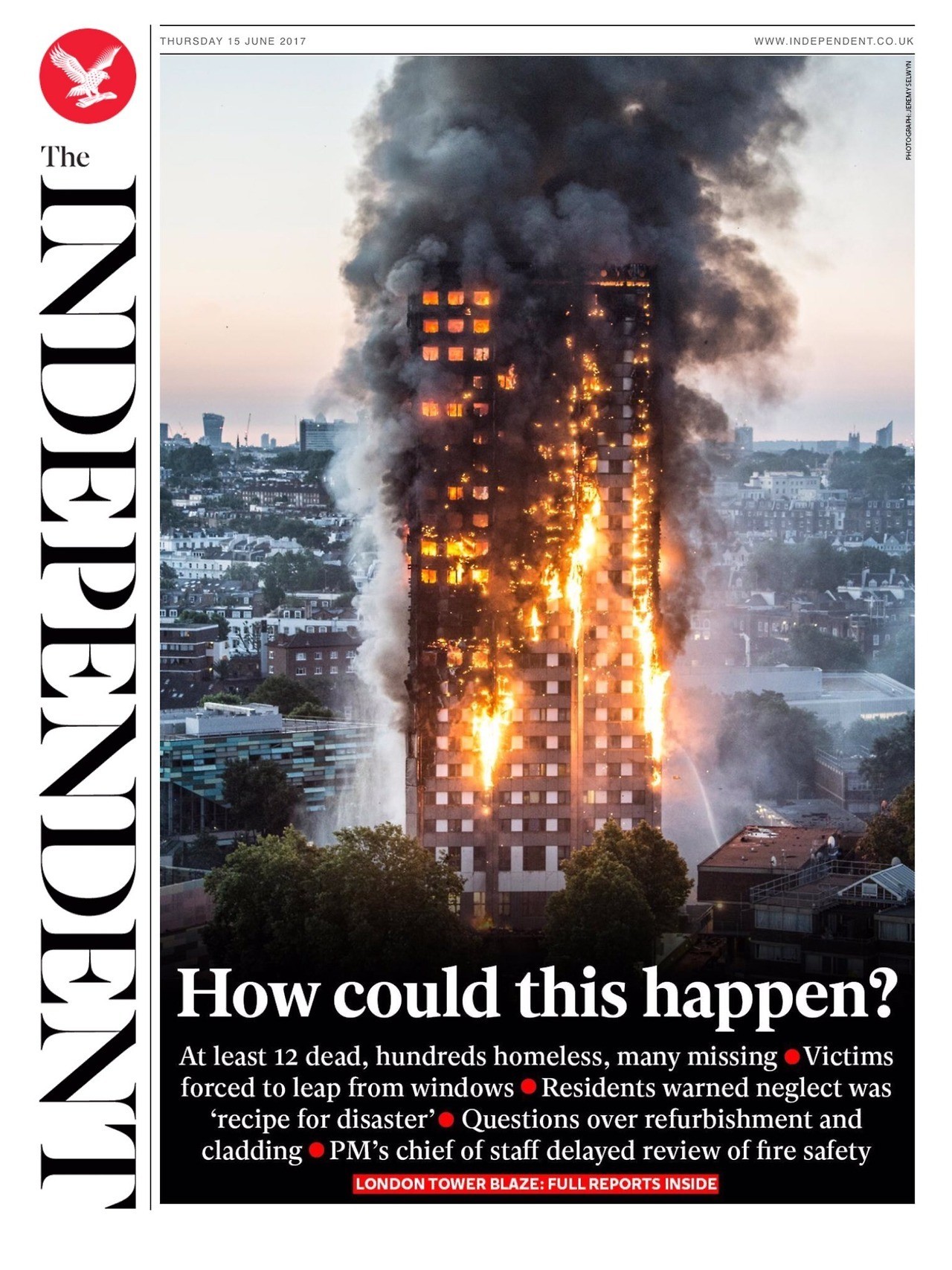



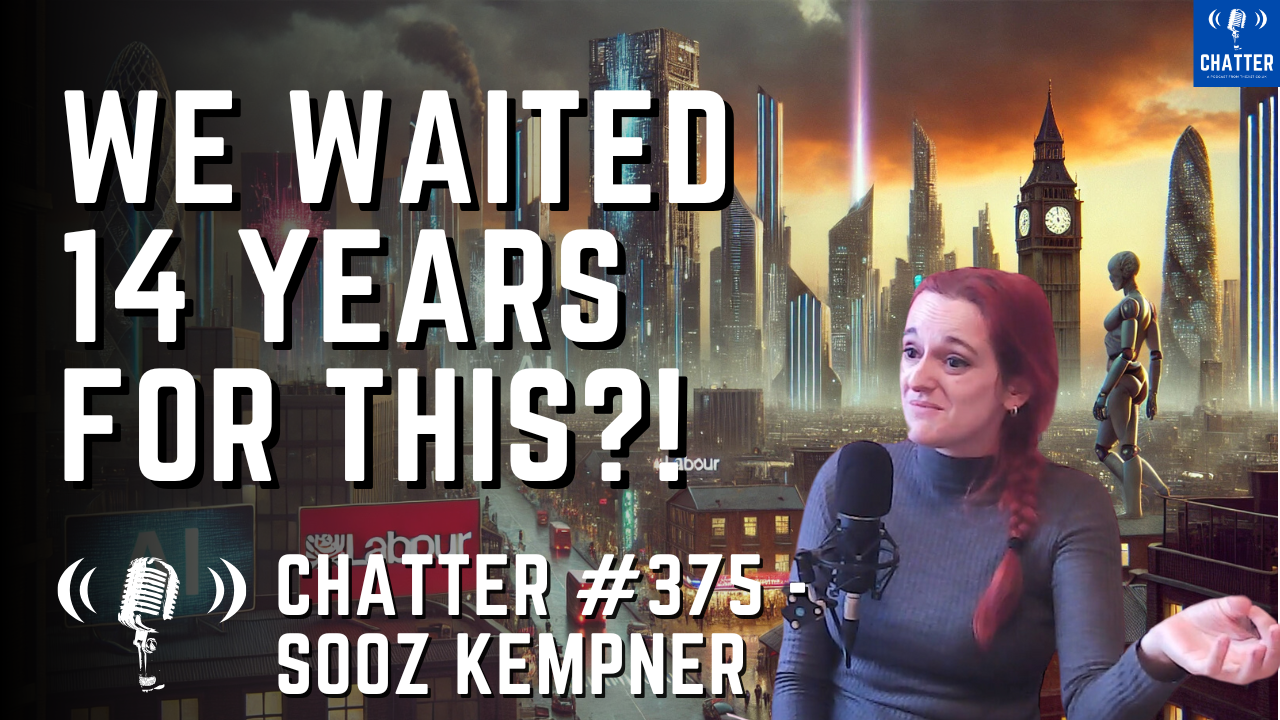
Hi there! I simply want to offer you a big thumbs up for your great information you have got here on this post. I’ll be coming back to your website for more soon.
Thank you, glad you enjoyed it!
I’m pretty pleased to uncover this site. I need to to thank you for your time for this fantastic read!! I definitely loved every part of it and I have you book-marked to look at new things in your blog.
Glad you enjoyed it! You can sign up to our mailing list here if you want get our weekly roundups!
there are insurance agencies that are scam too so make sure that you deal with legit insurance agencies::
Thank you for sharing!
There is a real demand for an alternative to the present right wing Press monopoly. It is a truth that the largest part of the world’s news provision is operated by right wing capitalists. Their intention is to further the virus of capitalism and increase the world’s gap between wealthy and poor. Left Insider offers left wing features from reputable sites like Novara and Buzz Feed etc. Everyone has the right to fully exploit our own potential and we all have the duty to help others maximise theirs.
There is a definite need for something different to the existing right wing media monopoly. It is a fact that the largest part of the world’s media is controlled by right wing moguls. Their aim is to spread the cause of capitalism and retain the world’s differentials between rich and hardship. Left Insider promotes left wing articles from reputable news sites such as Red Pepper and The Canary etc. We all own the birthright to fully exploit our own qualities and we all have the duty to help others maximise theirs.
There is a definite demand for an alternative to the current right wing Press monopoly. It is a truth that most of the world’s media is controlled by right wing capitalists. Their purpose is to spread the virus of capitalism and increase the planet’s differentials between wealthy and poor. Left Insider provides left wing articles from reliable news sites like Novara and Buzz Feed etc. We all own the birthright to fully exploit our own potential and we all have the duty to help others achieve theirs.